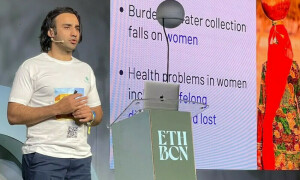Baluchistan Wheels Limited
Baluchistan Wheels Limited (PSX: BWHL) was established in 1980 with technical collaboration of GKN Sankey Limited, UK. The company is located in Hub, Baluchistan and manufactures and markets automotive wheel rims for trucks, buses, tractors, cars and mini commercial vehicles.
Shareholding pattern

As at June 30, 2021, over 46 percent shares are owned by the sponsors, directors, and their spouse and minor children. Within this category, Mr. Muhammad Siddique Misri, an executive director, and Mr. Razak Bengali, the CEO of the company, are major shareholders.The local general public owns close to 22 percent shares, followed by over 14 percent held under “others”. Another over 12 percent shares is held in modarabas and mutual funds, while the remaining about 5 percent shares are with the rest of the shareholder categories.
Historical operational performance
The company has seen a fluctuating topline over the years, while the profit margins in the last years declined between FY16 and FY20, before rising again in FY21 and FY22.
Topline in FY18 registered a growth rate of nearly 23 percent which was the highest seen in the last six years. Low interest rates encouraged auto sales while ride-sharing apps provided a further boost. Additionally, introduction of new models like Civic, BRV, Fortuner and Cultus played its part in rising auto sales. Moreover, the revival of the crop sector, and CPEC boosted growth in the trucks/buses and tractors segment. But due to increase in the prices of imported steel that was exacerbated by the currency devaluation cost of production grew to consume almost 86 percent of revenue, reducing gross margin to 14.3 percent. This also trickled to the net margin that was recorded at a lower 4.7 percent.

Revenue contracted in FY19 by 15.7 percent. This was attributed to lower sales of trucks/buses and tractors as CPEC slowed down, while production of cotton crop also reduced. National level sales of passenger cars were also adversely impacted as a result of an increase in prices, rupee depreciation, high interest rates and rising petroleum prices. With production cost reducing slightly to 84.5 percent, gross margin improved to 15.5 percent. However, net margin was lower, albeit only marginally, due to a rise in finance expense that grew from Rs 2 million in FY18 to Rs 7 million in FY19.

In FY20 the company witnessed the biggest decline in its revenue, by 42.5 percent. Topline fell to an all-time low of Rs 913 million during the year. Sales reduced across the board- from cars, to trucks, buses and tractors. While the industry was already facing lower sales due to high interest rates and restriction of non-filers, etc., the outbreak of Covid-19 pandemic further impacted sales as production was halted. Thus, gross margin fell to 12.9 percent. This also reflected in the net margin that slumped to its lowest at 2.1 percent for the year.

The company saw the highest revenue growth thus far in FY21 at 72.5 percent. This is attributed to demand recovery as economic activity picked up and businesses and productions resumed to somewhat normalcy after lockdowns eased. In addition, interest rates were lower that led to cheaper auto financing. The higher revenue reflected in the gross margin that was recorded at 15.4 percent for the year. However, increase in net margin was more pronounced, as it was posted at 6.4 percent, due to significant support from other income that was sourced through profit on treasury bills and sale of wastage material.
Recent results and future outlook
Revenue growth climbed further up as it was recorded at over 76 percent in FY22. This was the highest seen in more than a decade. Topline in value terms was also recorded at an all-time high of Rs 2.8 billion. As purchasing power grew with resumption of business activity, car assemblers saw a recovery of 55 percent, whereas the entire auto industry also exhibited improved performance. For the company, car wheel sales witnessed a growth of 110 percent, the truck/bus wheel sale grew by 34 percent, while the tractor wheel sale grew by 54 percent. This reflected in the gross margin that was considerably better at nearly 22 percent for the year. However, increase in net margin was marginal as it stood at 7.5 percent, due to significant tax expense combined with other income making a smaller share in revenue. Moreover, other expenses increased, both in value and as a share in revenue due to a combination of workers’ profit participation fund and a net exchange loss.
While the industry saw robust demand and performance in FY22, the coming year is expected to witness a slump in sales volumes owing to price hikes announced by auto-makers as PKR continues to fall against US Dollar. Moreover, high interest rates also discourage demand. In addition, the high sea freights and rising fuel prices have also played its role and reducing demand, and hence future profitability for the auto sector.
























Comments
Comments are closed.